

Have you ever read the Gospels and found yourself wondering what it was like for the disciples to be with Jesus—to be physically present with the One who created them and loved them? It would be incredible, wouldn’t it?
Thankfully, this privilege wasn’t limited to the disciples! In the gift of the Eucharist, Jesus makes himself present in every Catholic church and adoration chapel around the world. Through Eucharistic adoration, you have the opportunity to be in the Real Presence of Jesus—the One who created and loves you, too.
Read on to learn more about Eucharistic adoration and how to incorporate it into your regular prayer life.
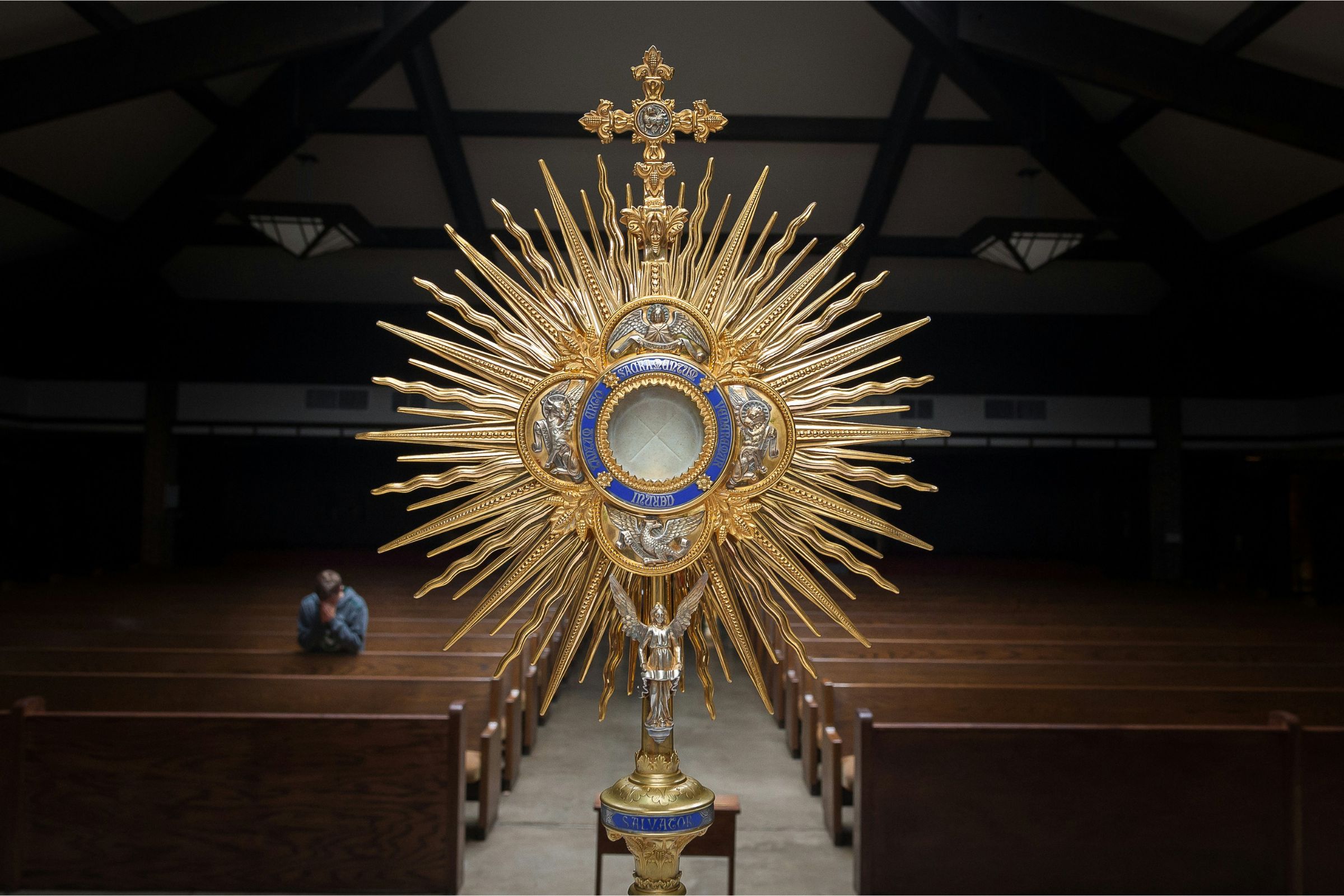
Jesus has promised to be with us always (see Mt 28:20), and he fulfills this promise in the gift of the Eucharist. Because of this, we have the unique opportunity to be with him too, and one of the most powerful expressions of this is Eucharistic adoration.
Eucharistic adoration is spending time with Jesus, who is really and truly present in the Holy Eucharist. This sacred time includes prayer, worship, and simply being with Our Lord. After the Mass, it’s one of the most intimate forms of prayer because we are literally meeting face-to-face with him whom we worship.
This is an incredible privilege and opportunity! But, what does Eucharistic adoration actually look like? We’ll explore the answer to that next.
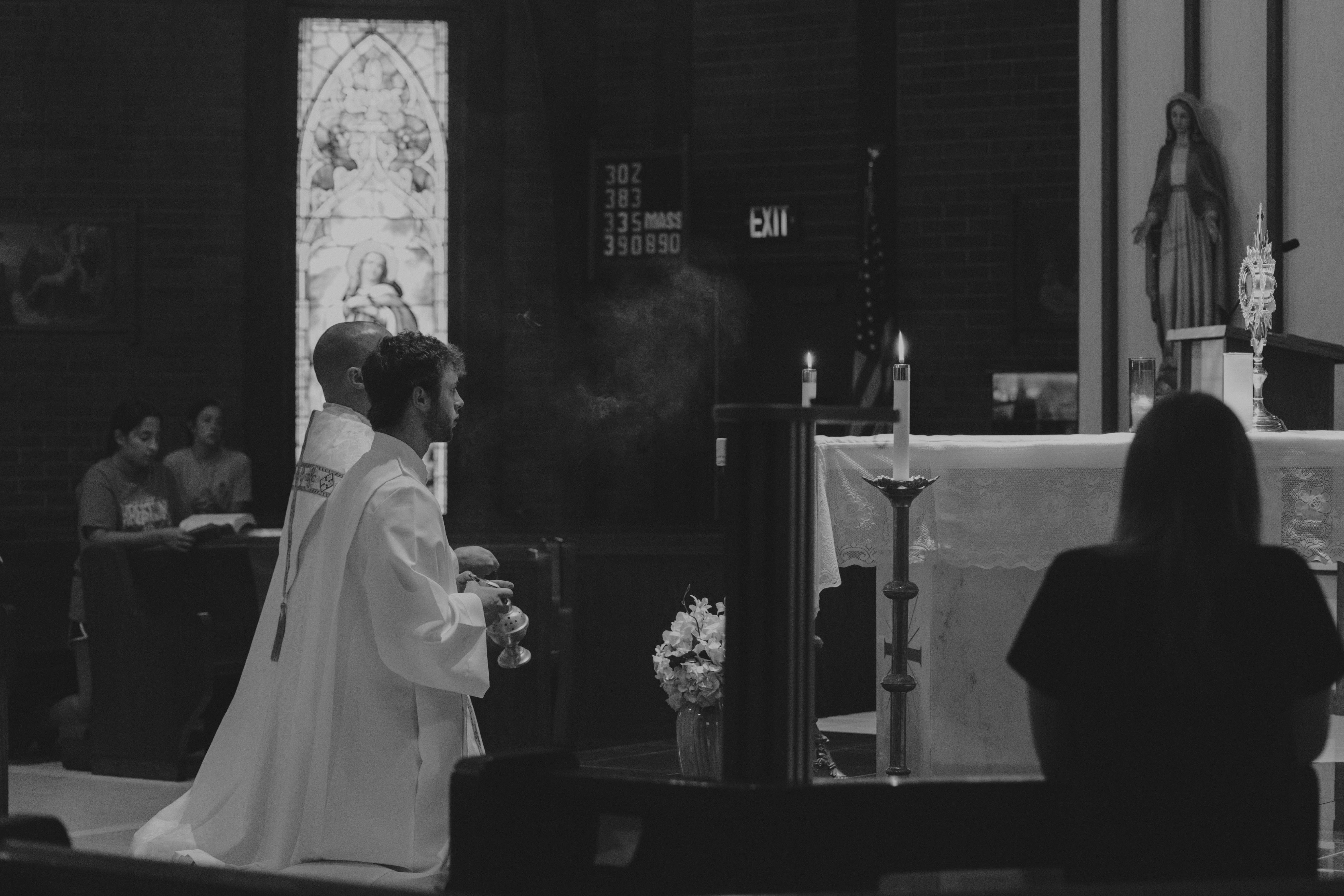
Now that we have an idea of what Eucharistic adoration is, let’s examine what it looks like to pray in this way.
Eucharistic adoration most often takes place in a quiet chapel. You can find these chapels at many Catholic churches, though they can also be connected to religious centers or apostolates, such as a Newman Center. Parishes that don’t have dedicated adoration chapels will sometimes host Eucharistic adoration in the church during specific hours.
Many Eucharistic adoration chapels are perpetual, which means someone is always present to adore Jesus in the Eucharist. Perpetual adorers will typically sign up for a weekly one-hour time slot, also known as a Holy Hour, so that the Eucharist is never unattended (both for security purposes and out of reverence for Our Lord). However, chapels are open to anyone who wants to come and pray, whether for an entire Holy Hour or just for a few minutes. (Check with your local parish to see if a passcode is required for entry.)
Within the chapel, the Eucharist is prominently displayed in a gold vessel called a monstrance, usually atop a small altar. Pews or chairs, often accompanied by kneelers, provide places for people to sit or kneel. A silent atmosphere shows reverence for Our Eucharistic Lord and fosters a prayerful mood for adorers.
But, what do adorers actually do while praying before the Blessed Sacrament? Read on for ten practices Catholics commonly include during their time of adoration.
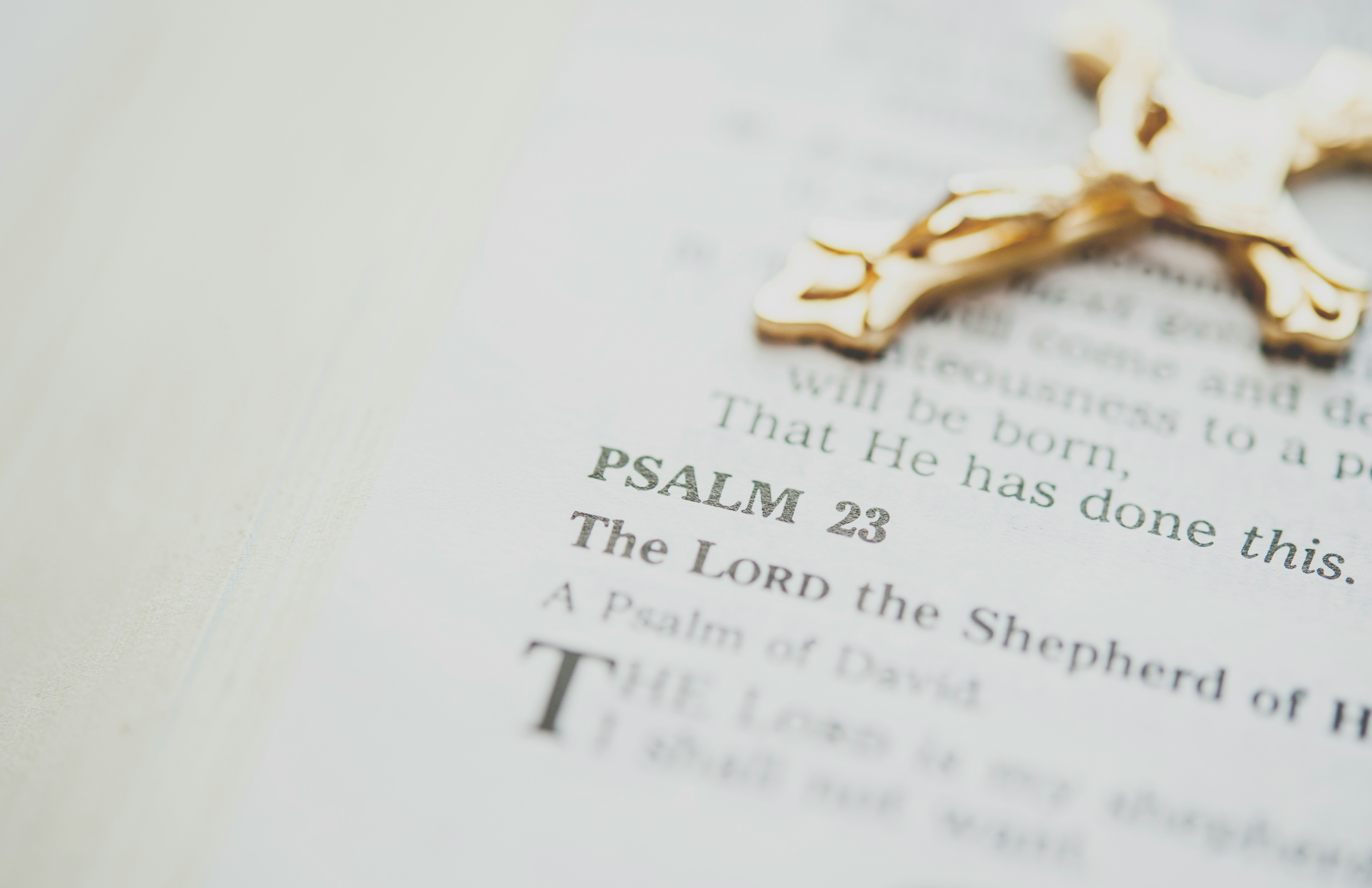
If you’re new to Eucharistic adoration—or if it’s been a while—and you’re not sure how to spend that time in prayer before the Blessed Sacrament, here are ten practices that many Catholics find to be spiritually fruitful during adoration. Try whichever practice resonates most with you, and remember to invite the Holy Spirit into your time of prayer, asking him to lead you.
1. Pray extemporaneously—simply share with Jesus everything that’s on your heart. Tell him about your hurts and hopes, your dreams and desires, your fears and worries. Imagine sharing this with Jesus just as you would speaking face-to-face with a friend.
2. Pray the Rosary. Our Lady always brings us closer to her Son, so this Marian devotion is a powerful and appropriate way to pray before the Blessed Sacrament.
3. Pray the Chaplet of Divine Mercy. This prayer specifically mentions the Eucharist: “Eternal Father, I offer You the Body, Blood, Soul, and Divinity of your dearly beloved Son, Our Lord Jesus Christ…”
4. Pray the Liturgy of the Hours, also known as the Prayer of the Church. You can get a prayer book that lists these prayers, or look them up online or on a Catholic prayer app.
5. Pray with a Catholic devotional or prayer book that includes prayers of the saints or other prayers.
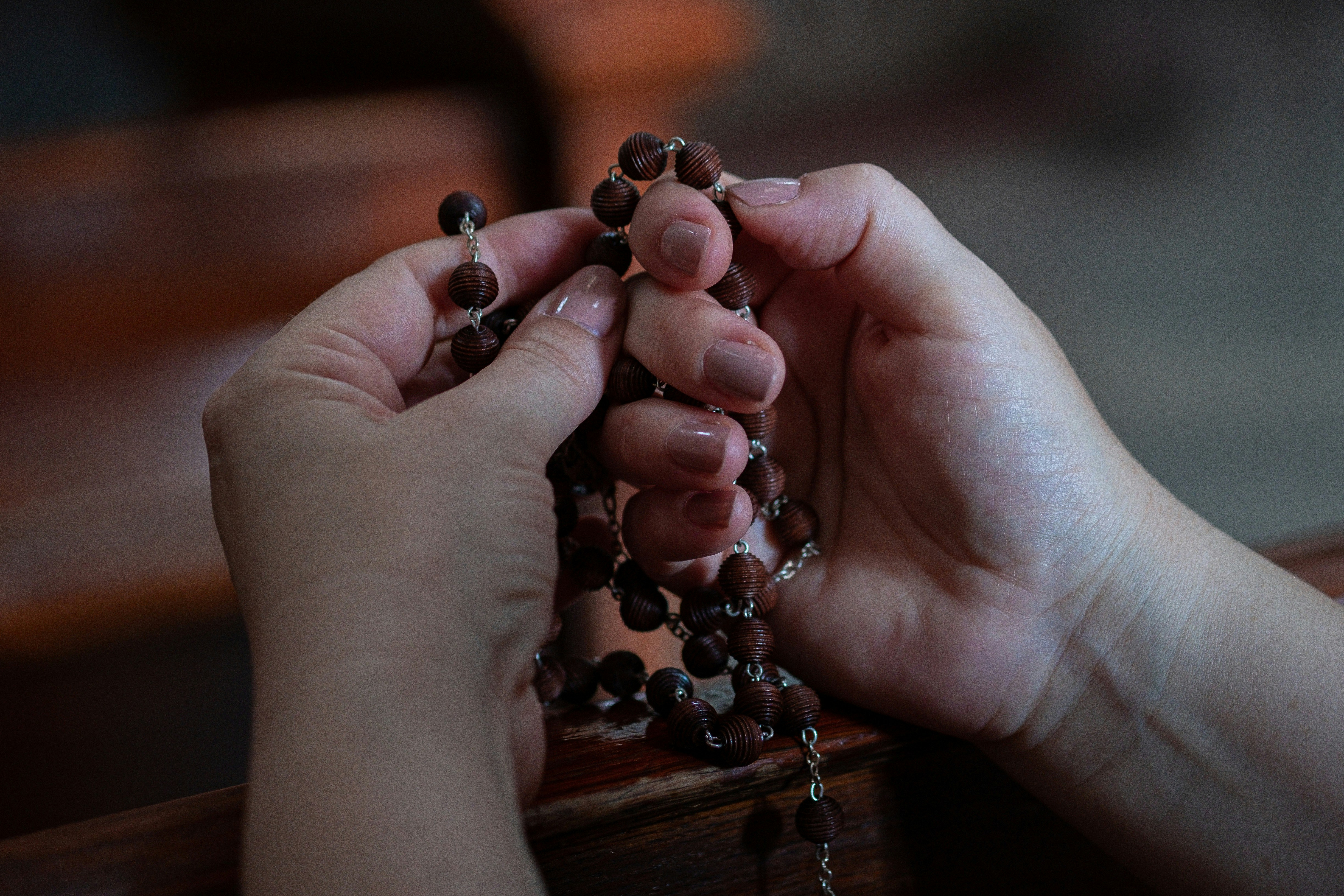
6. Read (and pray with!) Sacred Scripture. The Psalms contain many prayers, but any portion of Scripture would be fitting to read in the presence of the Blessed Sacrament.
7. Bring some form of spiritual reading with you: a Catholic devotional, the writings of the saints, etc.
8. Bring a journal. Journaling can help you focus on prayer by writing down your thoughts to God or by recording any insights you’ve had during your time of prayer.
9. Listen. Prayer is a conversation, not a monologue, so be sure to allow time to let the Lord speak to your heart if he so wills. If you don’t sense God saying anything to you, don’t worry! Know that he loves being with you even if he seems silent.
10. Be quiet and rest in Christ’s Eucharistic presence. Remember, you’re in the real, physical presence of Our Lord, so bask in this sacred moment!
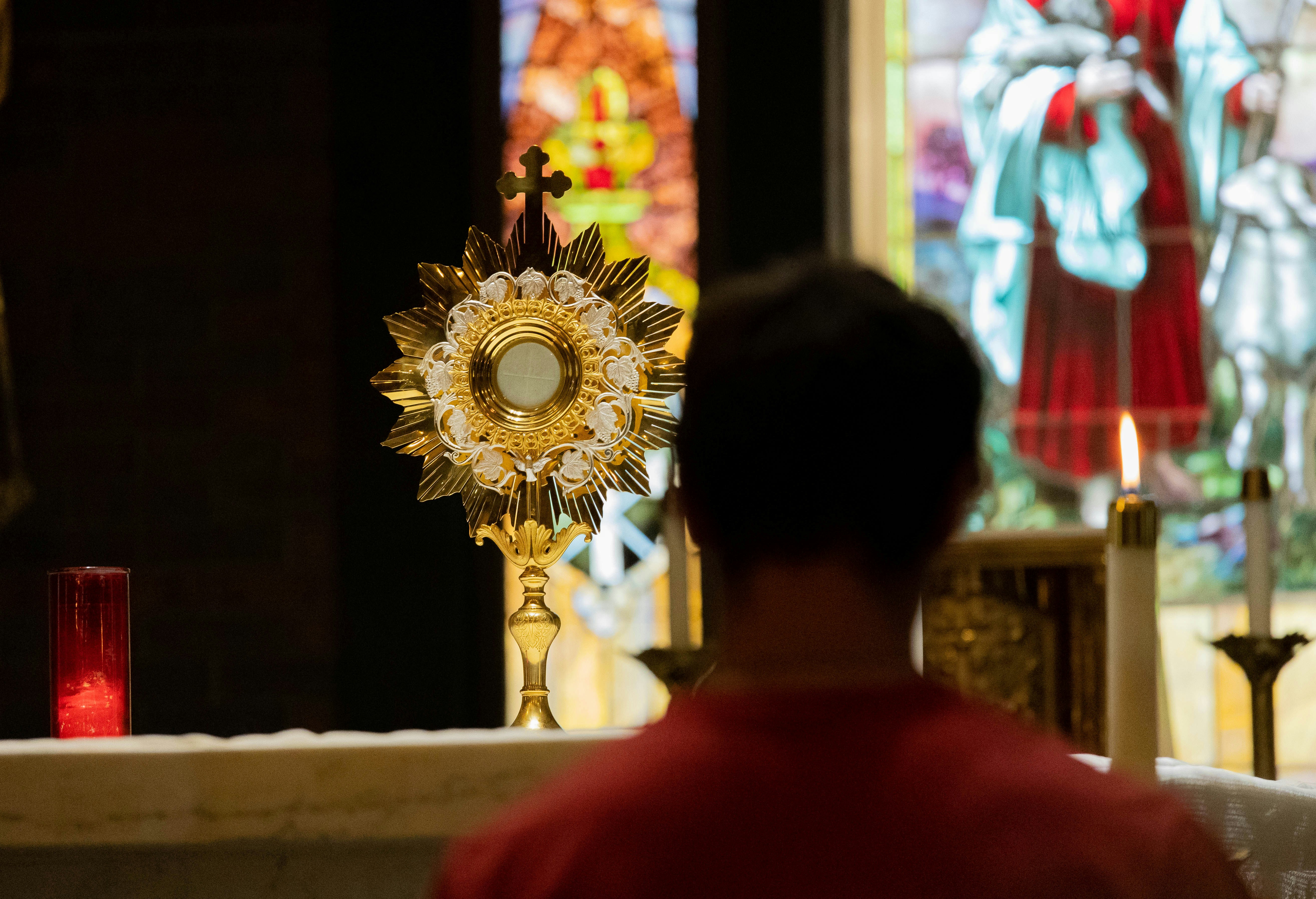
If you’re like most people, you already have a busy schedule, and the thought of driving to an adoration chapel and spending any amount of time in prayer may sound overwhelming or even impossible. But it doesn’t need to be! Here are four tips to help you seamlessly incorporate Eucharistic adoration into your prayer life.
1. Find an adoration chapel near your home or workplace, and find out what hours it’s open and whether there are any special restrictions to accessing it (e.g., a passcode for entry during overnight hours).
2. Stop by to pray for a few minutes on your way to or from work, on your lunch break, or while running errands.
3. Plan to make a Holy Hour (or even a “Holy Half Hour”) on your next day off. Put it in your calendar like you would any other appointment, and don’t forget to try one or more of the suggestions listed above for your time in prayer!
4. Invite a friend, family member, or neighbor to join you for extra motivation and accountability. Plus, spending time with Our Eucharistic Lord will be a blessing for them as well.
Now that you know more about what Eucharistic adoration is, what to expect at an adoration chapel, and what are some ways you can pray while there, it’s time for you to go experience the grace of being in the Real Presence of Jesus! Make it a point this week to visit a nearby adoration chapel. Our Lord will be so happy to see you!